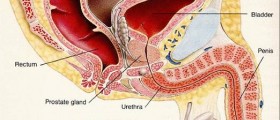
What is hematuria?
Hematuria is an ailment manifested through the presence of the blood in the urine. According to the visibility of the blood in the urine, hematuria can be classified as macroscopic (or gross hematuria) and microscopic hematuria. As the names suggest by themselves, macroscopic hematuria is easily noticeable, while microscopic hematuria can be only seen under the microscope.
The presence of the blood in the urine may be a sign of some serious health condition and because of that, people experiencing it are quite frightened when they discover it. Hematuria can be accompanied by pain, but on the other side, the painless hematuria may also indicate several ailments.
Causes of painless hematuria
Painless hematuria is a sign of almost each disorder associated with glomerulus. Therefore, painless hematuria, edema and low urine production are the most common symptoms of glomerulonephritis. Arteriovenous fistulas is a condition marked by the abnormal build up of blood vessels in some of the organs of the urinary tract, especially the kidneys. This condition typically causes bleeding, thus resulting in the appearance of the painless hematuria.
Painless hematuria may be also a result of either nephritis or pyelonephritis. The inflamed kidneys and the kidney infections are very likely to lead to the presence of the blood in the urine secretion. The people who suffer from kidney cancer or bladder cancer may also have painless hematuria as a sign of one of these two serious health diseases. Urinary tract cancer may be the trigger of the painless gross hematuria accompanied by frequent urination and swollen lymph glands.
In men who suffer from benign prostatic hypertrophy, which is characterized by the enlarged prostate, painless hematuria is likely to occur along with the inability to urinate normally. Sickle cell disease also leads to the incidence of painless hematuria. Furthermore, strenuous exercises may also be among the responsible culprits for painless hematuria, but it goes away after about three days if the person takes ample of rest. Painless hematuria may also appear as a side effect of some medicines, such as antibiotics, analgesics and anticoagulants. Some other causes of this condition are urinary tract infections, polycystic kidney disease and the formation of the kidney stones.
Diagnosis of painless hematuria
As we have seen, painless hematuria may be caused by numerous reasons so only the differential diagnosis is the best method to detect the underlying cause. The differential diagnosis includes various techniques, such as dipstick test, imaging test, urinalysis, blood test and cystoscopy.

















Your thoughts on this
Loading...